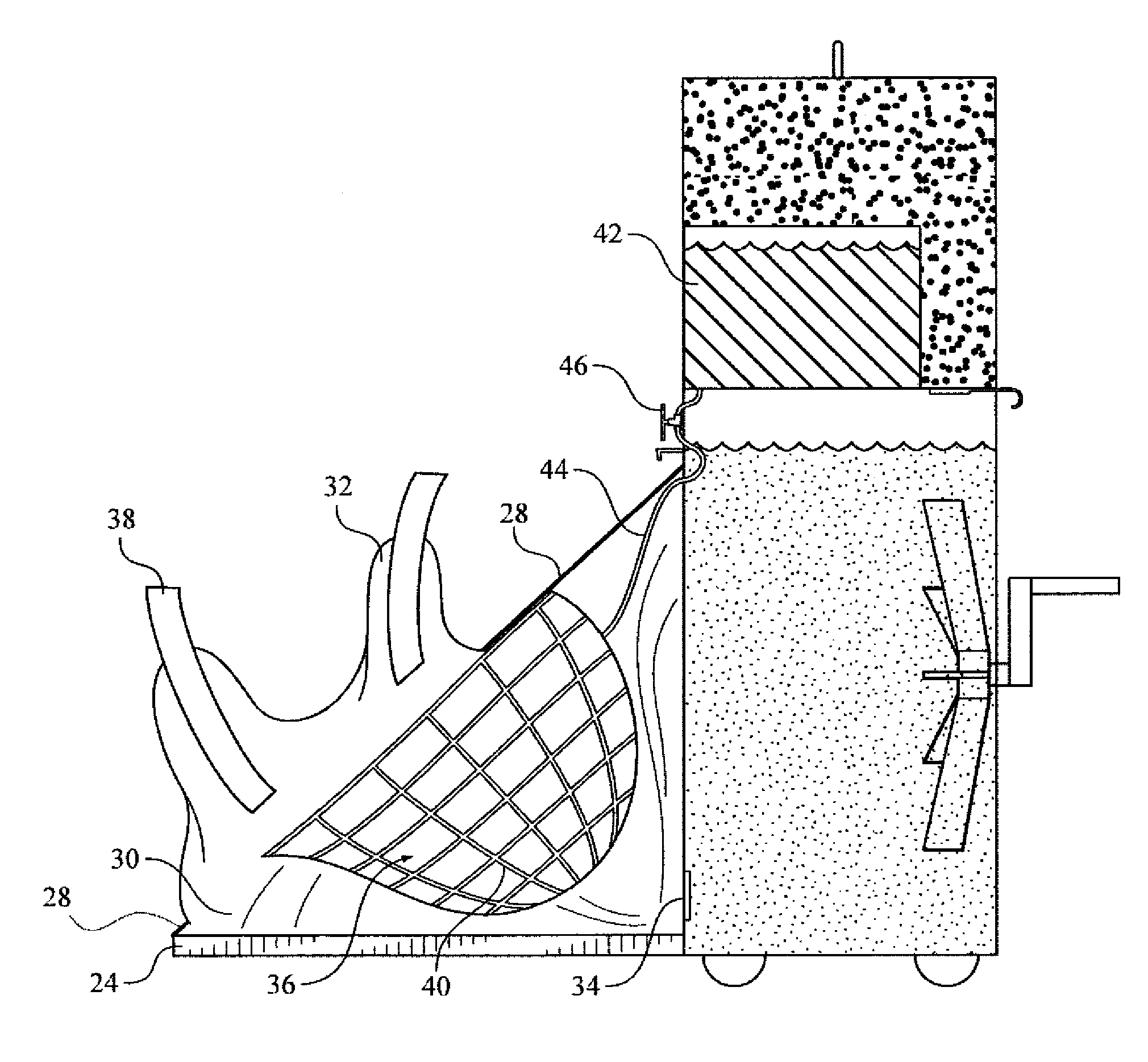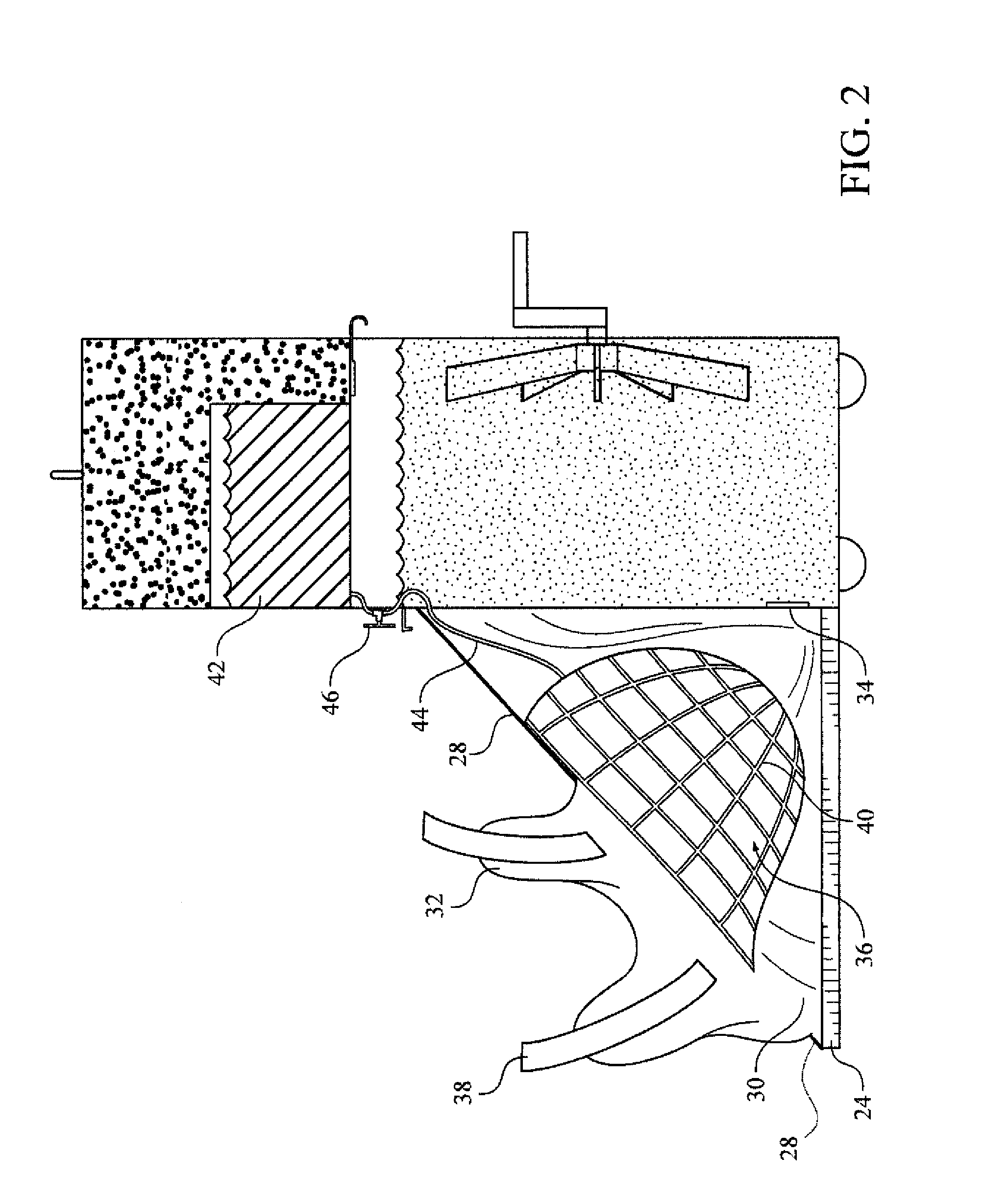Apparatus and method for preventing brain damage during cardiac arrest, CPR, or severe shock
a technology of cardiac arrest and apparatus, applied in the field of apparatus and methods for preventing brain damage during cardiac arrest, cpr, or severe shock, can solve the problems of not being available to typical non-paramedic first responders, not being studied or relevant to patients suffering from cardiac arrest, and difficulty in emergency inducement of systemic hypothermia in a non-hospital setting, etc., to achieve rapid cooling of the cranial and extracranial areas, prolonging hypothermia, and reducing the effect of s
- Summary
- Abstract
- Description
- Claims
- Application Information
AI Technical Summary
Benefits of technology
Problems solved by technology
Method used
Image
Examples
Embodiment Construction
[0031]It is to be understood that the figures and descriptions of the present invention have been simplified to illustrate elements that are relevant for a clear understanding of the invention, while eliminating, for purposes of clarity, other elements that may be well known. The detailed description will be provided herein below with reference to the attached drawings.
[0032]The present method for preventing or reducing brain damage during cardiac arrest, severe shock, or stroke comprises inducing localized hypothermia in the cranial and extracranial areas including the face, and optionally also including the mandible, in order to precipitate both extracranial vasoconstriction and intracranial cooling by conduction. This method of cooling the external area of the cranium without likewise cooling, for example, the torso and extremities, is moreover physiologically preferable to the more drastic induction of systemic hypothermia. Cranial cooling is preferred to systemic cooling for it...
PUM
 Login to View More
Login to View More Abstract
Description
Claims
Application Information
 Login to View More
Login to View More - R&D
- Intellectual Property
- Life Sciences
- Materials
- Tech Scout
- Unparalleled Data Quality
- Higher Quality Content
- 60% Fewer Hallucinations
Browse by: Latest US Patents, China's latest patents, Technical Efficacy Thesaurus, Application Domain, Technology Topic, Popular Technical Reports.
© 2025 PatSnap. All rights reserved.Legal|Privacy policy|Modern Slavery Act Transparency Statement|Sitemap|About US| Contact US: help@patsnap.com



